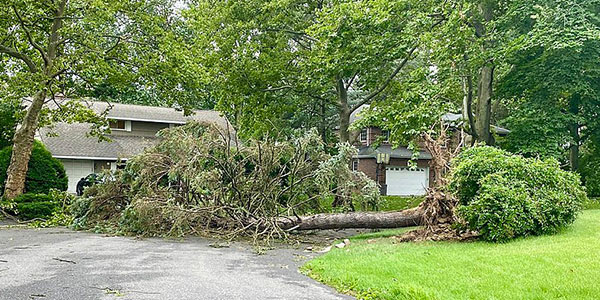The New York Public Service Commission on Thursday ruled on its first major electric rate case since the pandemic struck in March, approving three-year phased increases totaling $219 million for New York State Electric and Gas (NYSEG) and $74 million for Rochester Gas and Electric (RG&E).
The commission said “notable increases” for customers are effective from April 17, 2020 to April 30, 2023. Specifically, NYSEG electric delivery rates will increase by $45.7 million (6.1% of delivery revenues) in year one, $84.8 million (10.6% of delivery revenues) in year two and $88.6 million (9.9% of delivery revenues) in year three.
RG&E electric delivery rates will increase by $15.2 million (3.4% of delivery revenues) in year one, $28.1 million (6.3% of delivery revenues) in year two and $30.7 million (6.2% of delivery revenues) in year three (19-E-0378; 19-E-0380).
The commission said it decided the case in light of the state’s Climate Leadership and Community Protection Act (CLCPA), which requires that 70% of electricity generation come from renewable resources by 2030, and of the COVID-19 pandemic that led Gov. Andrew Cuomo on March 7 to declare a state of emergency, which remains in effect.
The commission said the first-year increases are much lower than originally requested by the utilities, both subsidiaries of Avangrid, the U.S. arm of Spanish energy giant Iberdrola. Special pandemic-related provisions include $30 million in emergency relief funds to provide immediate $100 utility bill credits to vulnerable customers and continued suspension of service disconnections and late payment fees.
NYSEG’s gas delivery rates will decrease by $0.5 million (0.3% of delivery revenues) the first year but increased by $3.4 million (1.7%) in the second year and by $5.3 million (2.5%) in year three. RG&E’s gas delivery rates will decrease by $1.1 million (0.6% of revenues) in year one and increase by $0.9 million (0.5%) and $3.9 million (2.1%) in the succeeding years.
Commissioner Diane Burman delivered the only dissenting vote, expressing concerns about the ratemaking process, the “huge” rate increases that will be necessary to accommodate CLCPA and the more cautious economic outlook due to renewed COVID-19 activity.
“I am now uncomfortable in voting for this rate case … Staff has focused on helping ratepayers… but the process has not been good, has been herky-jerky,” Burman said. “In the first major rate case decided in this time, incorporating COVID impacts … the evidentiary record is not there.”
The commission said the rate plans call for capital spending to improve service, with approximately $2.5 billion of investments in the companies’ electric systems to replace aging infrastructure ($1.6 billion at NYSEG and $871 million at RG&E). Overall vegetation management spending will increase from $30 million to $57 million for NYSEG’s electric business, and companies will add over 500 full- time employees, including 150 linemen and 55 apprentice linemen specifically intended to improve storm recovery responses.
Utilities Must ‘Show Cause’ on Isaias Response
The Department of Public Service (DPS) concluded an investigation into four of the state’s largest utilities alleged faulty preparation for and response to Tropical Storm Isaias in August, which affected nearly a million New Yorkers on Long Island, in New York City and in the central and lower Hudson River Valley.
The PSC opened a proceeding against three of them to show cause, leaving treatment of the fourth, PSEG Long Island, to its regulator, the Long Island Power Authority (20-E-0586).
Con Edison, Orange and Rockland (O&R) and Central Hudson now face potential penalties totaling $137 million, with Con Edison and O&R also facing potential license revocation, as threatened by Gov. Cuomo after the storm.
DPS investigators identified numerous apparent violations related to storm classifications, storm restoration staffing and assessment, call center staffing and response, and communications.
The utilities have 10 days to respond to recommendations on how to improve their response and restoration efforts, and 30 days to respond regarding a potential penalty action. Con Edison faces $102.3 million in penalties for 33 apparent violations, O&R faces $19 million for 38 apparent violations, and Central Hudson $16 million for 32 apparent violations.
Commissioner John Howard said weather forecasting is imprecise and that regulators must grapple with how much utility preparation is needed and at what cost.
“If we come out of this proceeding with a more gold-plated and much more expensive system that will deal with not completely rare, but not constant problems, it’s important that we don’t overpay,” Howard said.
The Con Ed meteorologist indicated there was a 50/50 chance of major damage being caused by this storm system, so the question becomes, “What is the prudent guess?” he said.
“Is it 50/50? Or is it 20%? At what point is that correct balance?” Howard said. “Customers in a very leafy suburban setting cannot expect the same security of service as people living in a city or more urban environment with better protected infrastructure.”
Rory Lancman, DPS’ newly appointed special counsel for ratepayer protection, will hold public forums and submit evidence to the PSC on any harm the utilities’ failures allegedly caused residents, businesses and localities.
The PSC also initiated a show cause proceeding against Con Edison for several outages in New York City in the summer of 2019, particularly a Manhattan outage on July 13 that affected 73,000 customers on the West Side and began with an electrical fault in a distribution cable, and an outage in Brooklyn a week later that was due to an electrical fault associated with a failed splice (20-E-0587). (See Con Ed Earnings Drop; Blackout Fines Loom.)




